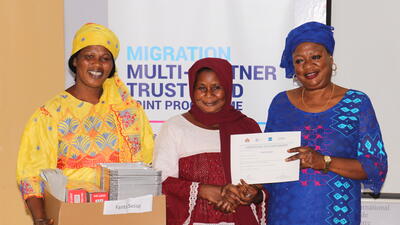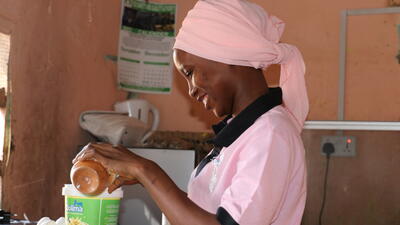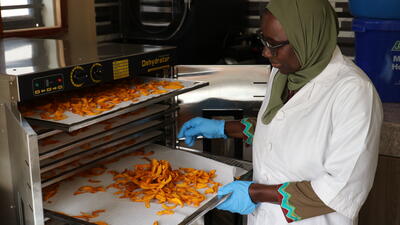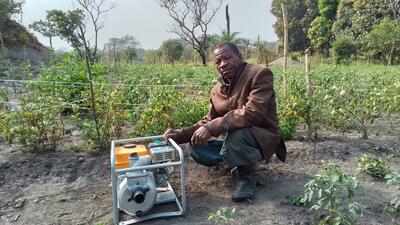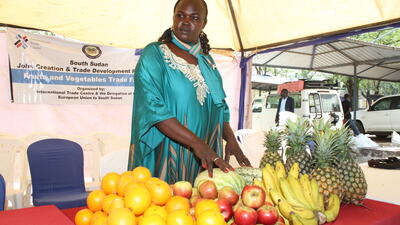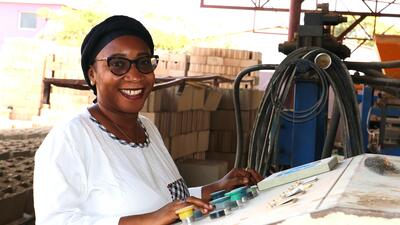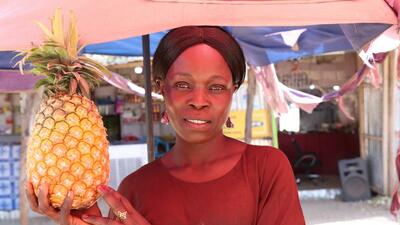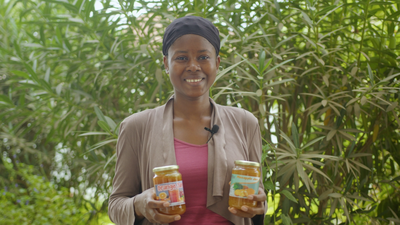Beyond microfinance: Creating opportunities for women at the base of the pyramid
‘She’s thanking you for her soft knees,’ said the Swahili translator.
‘Her what?’ The translator’s English was so heavily accented that I was not sure I had heard him correctly.
The translator tried again. This time he pointed to his knees for emphasis as he repeated the woman’s thank you and he added this explanation: ‘Because of the microfinance loans you’ve given her business, she no longer needs to kneel before her husband to beg for money for their children’s school fees.’
I have repeated this story to audiences all over the world. I tell the soft knees story to illustrate the transformative power of microfinance — to show how loans even as small as US$ 25 or US$ 40 can help to empower poor women across the globe. I also tell the soft knees story, however, to describe the limitations of microfinance, and to highlight the importance of moving beyond microfinance when serving those 3 billion people in the world who live on US$ 2 a day or less.
Over the years, as I have reflected on that brief encounter in Dar Es Salaam, Tanzania, I have come to realize that there was more to this soft knees story than I initially understood. In addition to offering thanks, this Tanzanian mother also was telling me of her dreams for her children, and describing the investment she was making in those dreams. She is not unusual in this regard, of course. Mothers all over the world share similar dreams and make similar investments in their children’s futures.
According to some reports, more than 800,000 Tanzanian youth, ages 15–24, enter the Tanzanian labour market annually, but only 3% secure employment in the formal sector. The remaining 97% of entrants must turn to the informal economy to find or create jobs.
More than a decade has passed, and I wonder if the woman’s investment in her children’s education has paid off as she had hoped. I worry that it did not. I worry that her microenterprise remained micro, and that her children are among the nearly 75 million unemployed youth of the world, as described by the International Labour Organization in its recent Global Employment Trends 2012.
And I worry that if access to finance is not paired with access to inclusive and scalable business opportunities, then the last decade’s achievements in expanding access to microcredit to over 150 million poor people will not be sufficient to keep these same people out of poverty over the long term.
Microfranchise à la Avon
A growing number of innovative social entrepreneurs are tackling this problem by creating ‘businesses in a bag’ inspired by the world’s largest direct seller of beauty products — Avon. These very small franchise or consignment businesses are affordable enough to be acquired and operated by women living at the base of the economic pyramid. Just as commercial franchise networks such as Avon have helped people with little or no experience grow into successful business owners around the world, microfranchise and microconsignment networks may hold similar promise.
Some of these social entrepreneurs are pursuing a dual objective: building business opportunities for very poor women and, at the same time, creating distribution platforms to deliver much needed goods and services to poor communities around the world. Take, for example, Living Goods, a non-profit organization operating in Uganda that was founded in 2007 by Chuck Slaughter after he studied Avon’s distribution methodology (www.livinggoods.org). Calling itself the ‘Avon of pro-poor products’, Living Goods has built and is expanding a distribution platform for a bundle of products designed to fight poverty and disease. Whereas an Avon representative might go door-to-door selling lipstick and mascara to her neighbours, Living Goods representatives sell products like clean cook stoves, bed nets, soap and fortified foods.
Another Avon-inspired business, also in East Africa, is Solar Sister (www.solarsister.org), which was founded in 2010 by Katherine Lucey. Solar Sister entrepreneurs, like their Living Goods counterparts, go door-to-door selling products to poor communities. In this case, however, the focus is on selling clean energy products such as solar-powered lighting units to replace kerosene lamps and candles. Solar Sister provides its entrepreneurs with a start-up kit of clean energy products, including portable solar lights, mobile phone chargers and radio battery chargers, along with training and marketing support. Solar Sister is a self-described ‘jobs-creation initiative, a women’s empowerment initiative,
a small-business initiative, and a clean-energy initiative.’ Importantly, Solar Sister is constructed on a microconsignment, rather than a microfranchise, model. This means that the Solar Sister entrepreneurs do not pay for their inventory up front, but rather pay only for inventory that is sold.
What is needed to expand the number and reach of microfranchise and microconsignment networks? Here are three lessons that the experience of microfinance might offer:
• Build investment-ready networks that are financially and operationally sustainable at multiple levels — for the individual micro-entrepreneur and for the network as a whole. As microfinance networks and providers worldwide have learned, they are only as viable as the micro-entrepreneurs they serve. Accordingly, products and services need to be sized and then priced at rates that the target customer can afford. Additionally, building sustainable networks not only ensures their longevity and viability, but such a strategy also will allow these networks to tap into the growing number of impact investors who are seeking social enterprises to support, while reducing the networks’ dependency on more limited donor funds.
• Measure the success of these networks holistically and transparently — both as to financial outcomes and development impacts on the micro-entrepreneurs and the communities that they serve. Be wary of metrics that can trigger, even if inadvertently, undesirable behaviours and outcomes.
Microfinance has learned the hard way that more is not always better. Put differently, a single-minded focus on spurring the growth rate of a microcredit portfolio can mask underlying weaknesses in its products and services. The same is likely true of microfranchise and microconsignment networks that prize fast growth over customer service or micro-entrepreneur development/training.
• Front-load micro-entrepreneur and customer protections into the business model of microfranchise and microconsignment networks from the start. Such protections were too long in coming to the microfinance sector, unfortunately. As a result, good intentions have been an inadequate defence against accusations that some in the microfinance sector rely on predatory lending and inappropriate debt collection practices. As microfinance has learned, it takes only a handful of ‘bad actors’ to tarnish the appeal of the sector as a whole. Similar concerns could be raised in the microfranchise and microconsignment context, particularly since two vulnerable populations could be impacted by microfranchise and microconsignment platforms — the micro-entrepreneur who is selling goods and services for the network, and the poor people in her community or village that are buying her wares.
These micro-entrepreneur and customer protections are likely to drive, at least in part, the business model of the network, so it makes sense to embed them from the start. For example, there may be some products and services that are inappropriate to be included in a ‘business in a bag’ distribution platform — for example, inventory that could be diluted, tampered with, or contaminated. Similarly, micro-entrepreneur protections are likely to colour and shape the nature of the relationship and support offered to the micro-entrepreneur by the network.
If microfranchise and microconsignment networks were able to scale in number and outreach to approximate the footprint that microfinance enjoys today, the world at the base of the economic pyramid would look markedly different. New business and employment opportunities would be generated in rural villages as well as in urban settings. Youth unemployment and underemployment rates would fall. Much-needed products and services would reach poor communities, no matter how isolated, through innovative distribution platforms.
In short, this would be a world where investments like that of the mother in Tanzania generate extraordinary returns.





